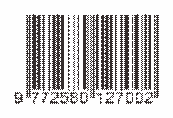Performance Evaluation of Pontianak Kapuas Indah Market from Architecture and Behaviour Aspect
Abstract
The Government of Pontianak City efforts in carrying out the mission of creating quality and representative urban infrastructure are a program to improve and assets development of public facilities. It formed of infrastructure and are currently functioning for public service facilities. One of the assets of this public facility is the 40-years-old Pontianak Kapuas Indah Market, located right on the edge of the Kapuas River. This market in its past is known as the Kapuas Indah Shopping Center, it experienced decreasing of quality or function shifting, along with the development of cities that grow the new economic areas that are more modern and millennial. At present, this market is still functioning but only limited to certain consumer market segments. Therefore, it is necessary to have repairing and developing in order to be able functioning optimally as the city public asset. In order to improve and redevelop the facilities in this market, the post-occupancy evaluation method needs for market physical facilities and infrastructure, this steps for developing physical facilities meet more targets in the future. This study uses qualitative exploratory methods with an investigative approach to analyze the aspect of behavior users of buildings and it functions of the Kapuas Indah Market and from these results of the analysis determined the problem handling strategies in it. The results of this study are strategies and recomendations for improving functional performance with regard to compatibility or suitability, namely the concept of statements about the quality of the relationship between user activities and the physical building of the Kapuas Indah Market. Second, adjustments related to human activities in the room, behavior related to equipment and possibilities of adaptation to the demands of building physics and the natural environment around the Kapuas Indah Market.
Keywords: behavior; function; performance
Full Text:
PDFReferences
Blyth, A. and A. G. (2006). Guide to Post Occupancy Evaluation. London: Higher Education Funding Council for England (HEFCE).
Fajarwati, A. N. (2016). Kajian Behavior Setting Di Pasar Tugu Simpang Lima Gumul Kediri. Jurnal Arsitektur NALARs, 15 No. 2, p. 99–108.
Gray, C. and W. H. (2001). Building Design Management (1st ed.). Oxford: Butterworth-Heinemann.
Merrit, F. S. and J. A. (1990). Building Engineering and System Design (2nd ed.). New York: Springer.
Natalia, Dita Ayu Rani, Endah Tisnawati, dan A. N. L. (2019). Evaluasi Purna Huni di Perumahan Condongcatur Ditinjau dari Aspek Penggunaan dan Perubahan Ruang. Nalars Jurnal Arsitektur, Volume 18, p.35–44.
Preiser, W.F.E., U. S. (1998). Building performance evaluation. In D. Watson, M.J. Crosbie, J.H. Callender (Eds.), Time-saver Standards (7th ed.) (7th ed). New York: McGraw Hill.
Royal Institute of British Architects. (2016). Post Occupancy Evaluation and Building Performance Evaluation Primer. London: www.architecture.com.
Setiawan, B. D. H. (2010). Arsitektur, lingkungan dan perilaku. Yogyakarta: Gadjah Mada University Press.
Siregar, Aldo Wicaksono , Jenny Ernawati, T. H. (2017). Perancangan Balai Latihan Kerja Industri Dengan Pendekatan Pola Pergerakan Pengguna. Universitas Brawijaya.
Siregar, J. P. (2014). Metodologi dasar space syntax dalam analisis konfigurasi ruang. Malang.
Syafriyani, Sangkertadi, J. O. W. (2015). Evaluasi Purna Huni (EPH) : Aspek perilaku ruang dalam SLB YPAC Manado. S.l. : Media Martasain, 12 (No.3, November 2015).
Tunstall, G. (2006). Managing the building design process (2nd ed.). https://doi.org/https://doi.org/10.4324/9780080461427
DOI: https://doi.org/10.17509/jare.v1i2.22301
Refbacks
- There are currently no refbacks.
Copyright (c) 2020 M Ridha Alhamdani

This work is licensed under a Creative Commons Attribution-NonCommercial-ShareAlike 4.0 International License.

This work is licensed under a Creative Commons Attribution-ShareAlike 4.0 International License.








